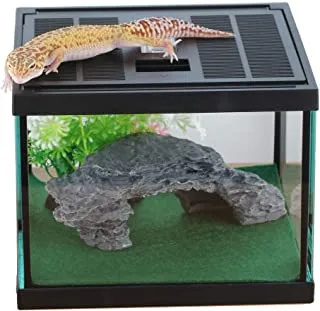Choosing the Best Tarantula Enclosure Essentials
Choosing the right enclosure is paramount to ensuring your tarantula thrives. A well-chosen habitat provides a safe, comfortable, and enriching environment, allowing your eight-legged friend to display its natural behaviors and live a long, healthy life. This guide will walk you through the essential factors to consider when selecting the best tarantula enclosure, covering everything from size and ventilation to substrate and hiding places. By understanding these key elements, you can create a perfect home that caters to your tarantula’s specific needs and enhances your overall pet-keeping experience. Remember that the enclosure is more than just a container; it’s a miniature ecosystem that profoundly impacts your tarantula’s well-being. Careful consideration of these factors will ultimately result in a happier, healthier tarantula.
Size Matters The Importance of Enclosure Dimensions
The size of your tarantula enclosure is a critical factor influencing your pet’s comfort and well-being. A general rule is to provide an enclosure that is at least twice as wide as your tarantula’s leg span. This gives them ample room to move around, explore, and hunt. Too small of an enclosure can lead to stress, which may impact eating habits and overall health. On the other hand, a space that is too large can make it more challenging for a young tarantula to find its food and may also lead to it feeling exposed and insecure. As your tarantula grows, you’ll need to upgrade its enclosure accordingly. Always consider the tarantula’s adult size when selecting an enclosure, especially if you are starting with a juvenile. This will help prevent the need for frequent upgrades and ensure your tarantula always has enough space to thrive.
Terrestrial vs Arboreal Tailoring to Your Tarantula’s Needs
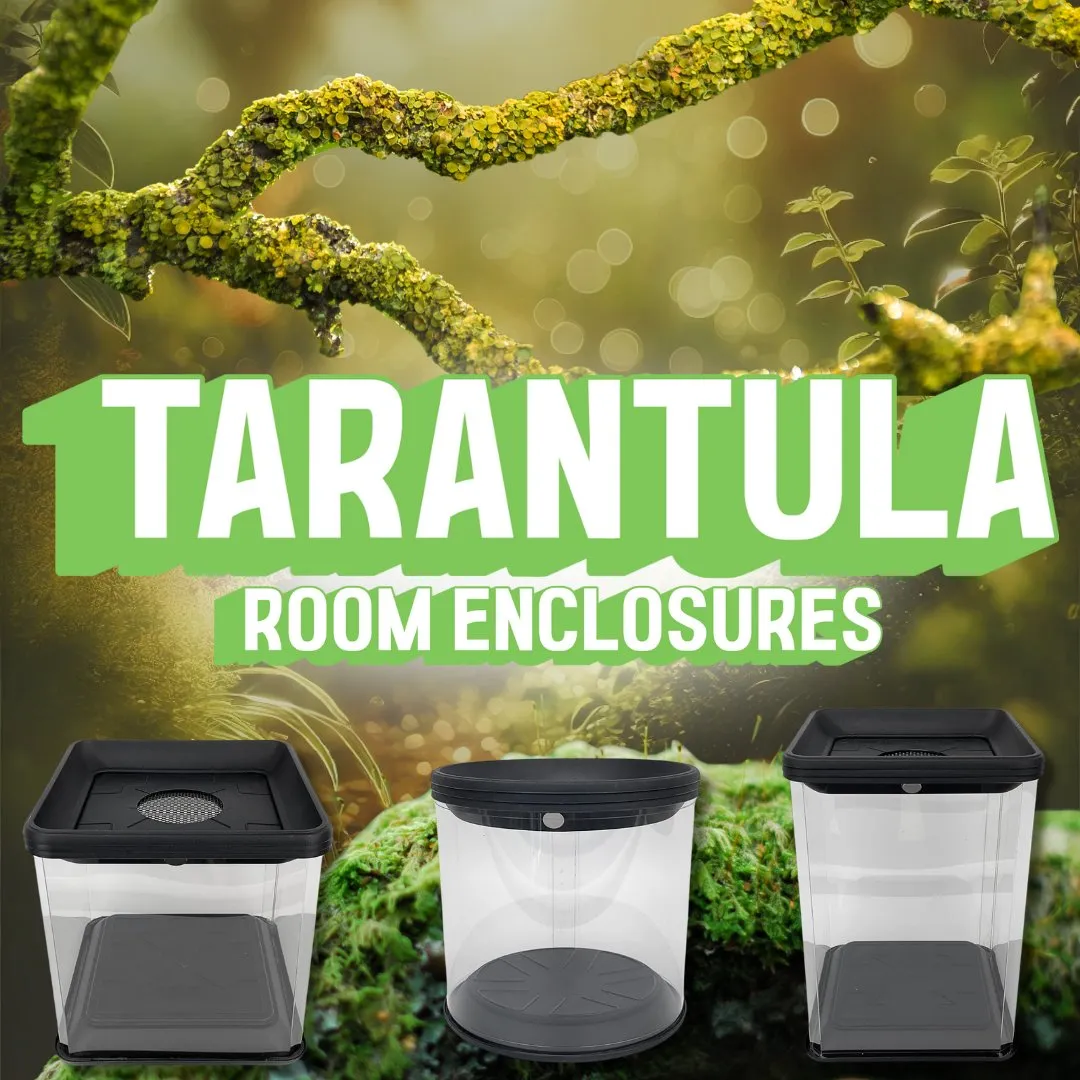
Tarantulas have different lifestyles depending on their species, therefore, the enclosure design needs to meet their requirements. Terrestrial tarantulas, which live on the ground, require more horizontal space and less height, allowing them to roam and burrow. An enclosure with a slightly wider base is more suitable for terrestrial species like the Chilean rose or the Mexican red knee. The substrate depth should be adequate for burrowing. Arboreal tarantulas, those that live in trees, need more vertical space to climb and establish webs. These species, such as the Pinktoe tarantula, thrive in taller enclosures with vertical elements like branches or cork bark for climbing and web-building. Understanding your tarantula’s natural behavior is crucial for choosing the appropriate enclosure type.
Ventilation Key to a Healthy Habitat
Proper ventilation is an essential component of a healthy tarantula enclosure, preventing the buildup of harmful mold, bacteria, and excess humidity, which can lead to health problems like fungal infections. Effective ventilation also ensures the air inside the enclosure remains fresh and promotes good respiration for your tarantula. Enclosures should have cross-ventilation, typically with holes or mesh on the sides and top, to allow for airflow. Avoid enclosures with solid lids and minimal ventilation, as these can create a stagnant, humid environment. Regularly check the enclosure for signs of excessive moisture, such as condensation, which may indicate insufficient ventilation. Adjusting the ventilation by adding more holes or modifying the lid can help to maintain a balanced environment and ensure the well-being of your tarantula. Proper ventilation is often underestimated, but it’s one of the most critical factors in tarantula care.
Material World Glass Acrylic or Plastic
The material of your tarantula enclosure significantly impacts its usability, durability, and aesthetic appeal. Glass enclosures are classic choices, offering excellent visibility and are relatively easy to clean. However, they can be heavier and may crack if dropped. Acrylic enclosures are lightweight, durable, and provide superior insulation, which helps to maintain temperature and humidity levels. Acrylic also offers great visibility and is less likely to break than glass. Plastic enclosures are a more affordable option, usually lightweight and readily available, but the visibility might not be as clear as glass or acrylic, and they may scratch more easily. Each material has its pros and cons, so carefully consider your priorities and budget when choosing the best material for your tarantula’s enclosure. Regardless of your choice, ensure the enclosure is escape-proof and has a secure lid.
Setting Up the Perfect Tarantula Habitat
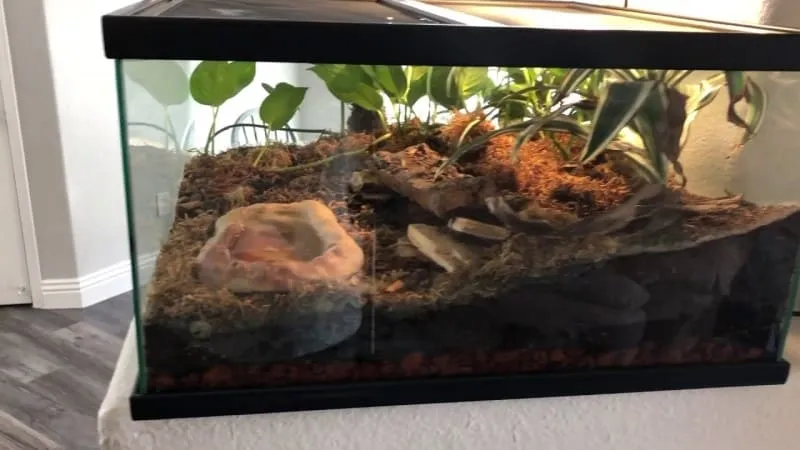
Setting up a tarantula habitat involves more than just placing the spider in an enclosure; it’s about creating an environment that mimics its natural surroundings. This section will guide you through the key elements necessary for designing a thriving habitat. The substrate, hiding places, water source, and climate control all contribute to the overall comfort and well-being of your tarantula. A well-designed habitat helps reduce stress, encourages natural behaviors, and enhances your enjoyment of having a pet tarantula. Ensure that the materials you use are safe, non-toxic, and suitable for the species you are keeping. Careful attention to detail during setup will pay dividends in the long run, providing a happy and healthy life for your tarantula.
Substrate Selection Options and Recommendations
The substrate is the foundation of your tarantula’s habitat, serving as a bedding material that helps maintain humidity, provides a surface for burrowing (for terrestrial species), and absorbs waste. Common substrate options include coconut fiber (coco coir), peat moss, vermiculite, and a mixture of these. Coco coir is a popular choice because of its excellent moisture-retaining properties and is readily available. Peat moss is another good option, known for its moisture retention and natural look, but it can sometimes mold if overwatered. Vermiculite is often used to maintain humidity, but it’s not suitable as a primary substrate due to its lack of structure. The depth of the substrate depends on the species and the tarantula’s size, with terrestrial species requiring deeper layers for burrowing. Avoid substrates containing pesticides or fertilizers, as these can be harmful to your tarantula. Regularly monitor the substrate for mold or excessive moisture, and replace it as needed to maintain a clean and healthy environment.
Hiding Places Creating a Comfortable Environment
Providing hiding places is crucial for your tarantula’s well-being, as it allows them to feel secure and retreat when they feel threatened or wish to molt. Hiding spots also give them a sense of privacy and reduce stress. Suitable options include cork bark, artificial or natural hides, hollow logs, or even appropriately sized plastic plant pots. The hide should be large enough for your tarantula to comfortably fit inside, yet small enough to make them feel secure. The type of hide will often depend on the species, with terrestrial tarantulas preferring hides that sit on the ground and arboreal species preferring those that are elevated. Place the hide in a location that allows your tarantula to easily access it. Ensure the hide is sturdy and won’t collapse on the tarantula. Regularly check the hide for any signs of mold or damage, and replace it as needed to keep the environment clean and safe. A well-chosen hide is essential for promoting a calm and confident tarantula.
Water Source Providing Hydration for Your Spider
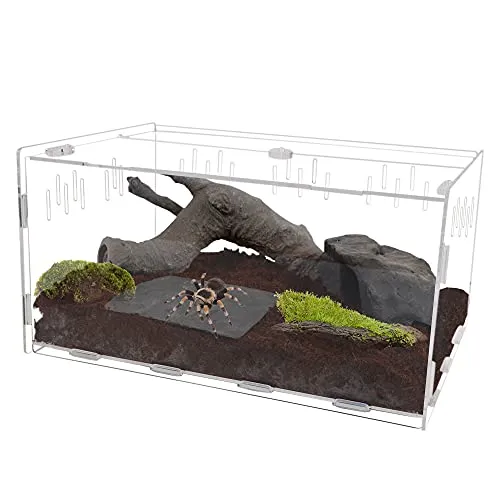
A consistent water source is essential for your tarantula’s hydration and overall health. The water should be readily accessible, safe, and clean. For smaller tarantulas, a shallow water dish is often sufficient, while larger specimens might need a slightly bigger dish. Ensure the dish is stable and not easily tipped over, as this could lead to the substrate becoming waterlogged and unsanitary. Alternatively, some keepers use a water gel, which provides moisture while reducing the risk of drowning. Water dishes should be cleaned and refilled regularly, usually every one to two days. Use dechlorinated water, as chlorine can be harmful. The size and placement of the water source depend on the species and enclosure setup. Always monitor the water source and ensure it remains fresh and clean to prevent any health issues associated with dehydration or bacterial growth. Providing a consistent water supply is a straightforward yet vital aspect of tarantula care.
Temperature and Humidity Controlling the Climate
Temperature and humidity are critical environmental factors influencing your tarantula’s health, molting, and overall well-being. Most tarantulas thrive in temperatures ranging from 75 to 85 degrees Fahrenheit (24 to 29 degrees Celsius), but this can vary depending on the species. Use a reliable thermometer to monitor the temperature inside the enclosure. Humidity levels also depend on the species, with some requiring higher humidity than others. Measure humidity using a hygrometer. To maintain proper humidity, mist the enclosure with dechlorinated water, especially in drier environments. The frequency of misting varies depending on the species and the enclosure’s ventilation. Avoid extreme temperature fluctuations, as these can stress your tarantula. You can use heat lamps or mats if needed, but always monitor the temperature to prevent overheating. Controlling the climate ensures your tarantula feels comfortable, which in turn helps with feeding, molting, and overall health.
Maintaining and Cleaning Your Tarantula Enclosure
Regular maintenance and cleaning are critical for keeping your tarantula’s enclosure clean, healthy, and conducive to its well-being. This involves routine tasks such as removing waste, replenishing water, and monitoring the overall environment. A consistent cleaning schedule and proper substrate maintenance are essential for preventing bacterial growth, mold, and unpleasant odors. Regular maintenance is not just about aesthetics; it’s about the health and safety of your tarantula. A clean environment reduces the risk of illness and provides your spider with an optimal living space. This section will provide you with a simple guide to maintaining a clean and healthy habitat, promoting the longevity and well-being of your tarantula.
Regular Cleaning Schedule Keeping Things Fresh
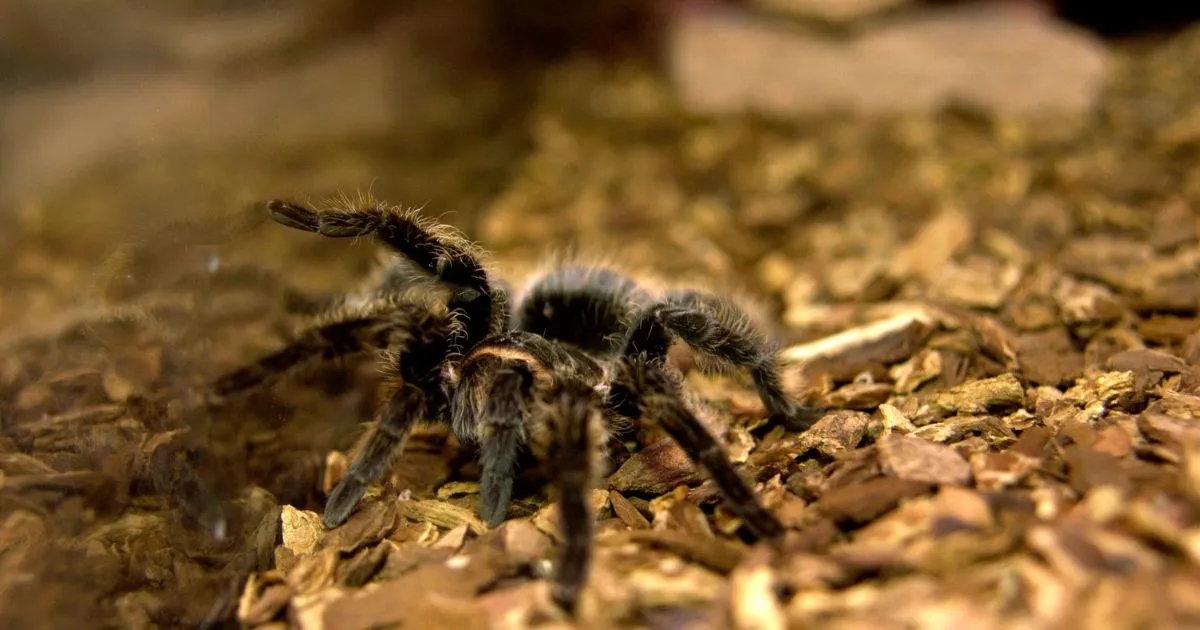
Establishing a regular cleaning schedule is essential for maintaining a healthy tarantula enclosure. Daily tasks include checking and refilling the water dish and spot-cleaning to remove any uneaten prey or waste. Weekly tasks involve inspecting the enclosure for mold or excessive moisture and removing any noticeable debris or old molts. Monthly maintenance might include a more thorough spot cleaning, which involves removing and replacing a portion of the substrate to prevent the buildup of waste. Every few months, consider a more in-depth cleaning, which involves removing the tarantula (safely) to replace the entire substrate. When cleaning, use a pet-safe disinfectant and ensure the enclosure is completely dry before returning your tarantula. The frequency and intensity of cleaning will depend on the species, size of the tarantula, and the enclosure setup. A consistent cleaning schedule helps maintain a sanitary environment, which reduces the risk of health issues and promotes a stress-free environment for your tarantula.
Substrate Maintenance Replacing and Refreshing
Proper substrate maintenance is a crucial aspect of keeping your tarantula enclosure healthy and clean. The substrate absorbs waste and maintains humidity, so it’s essential to replace or refresh it regularly. Spot cleaning is the first step, removing visible waste and any uneaten food. Over time, the substrate will break down, and waste will accumulate, affecting its ability to absorb moisture and control odors. For a general guideline, you can replace a portion of the substrate monthly, especially if you notice unpleasant odors or a decline in humidity control. In some cases, a complete substrate replacement might be necessary every six months to a year, depending on the species and the size of the enclosure. When replacing the substrate, remove the tarantula safely and clean the entire enclosure thoroughly. The choice of substrate also impacts how often you need to replace it. Coconut fiber usually needs to be replaced more frequently than peat moss. Proper substrate maintenance is essential for the long-term health of your pet.
Troubleshooting Common Enclosure Problems
Even with careful setup and maintenance, enclosure problems can occur. Knowing how to troubleshoot common issues will help you maintain a healthy habitat. One common problem is excessive humidity, which can lead to mold growth. To fix this, increase ventilation by adding more ventilation holes or adjusting the lid. Insufficient humidity can lead to molting problems, where the tarantula has trouble shedding its exoskeleton. In this case, mist the enclosure more frequently and provide a larger water dish. If you notice a foul odor, it may indicate a buildup of waste or bacteria. Perform a thorough cleaning and substrate change. If your tarantula stops eating, check the temperature and humidity, and make sure the enclosure is not too small or stressful. If your tarantula is constantly trying to escape, ensure the enclosure is escape-proof, with a secure lid. Addressing problems quickly is important, as it will keep your tarantula feeling secure and healthy.
Upgrading Your Tarantula Enclosure When and How
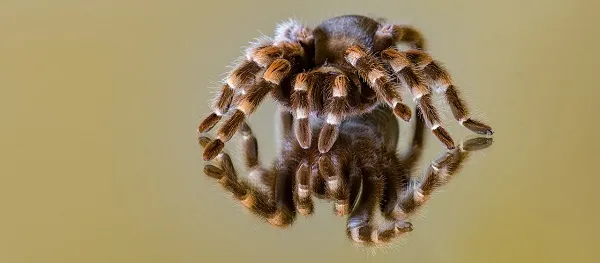
As your tarantula grows, it will eventually outgrow its enclosure, making it necessary to upgrade its habitat. Upgrading the enclosure is essential for providing enough space for your tarantula to move around, hunt, and live comfortably. The timing of an upgrade depends on the species’ growth rate and the enclosure’s initial size. For fast-growing species, you might need to upgrade every few months. For slow-growing ones, an upgrade every year or two might be sufficient. Signs that indicate a need for an upgrade include the tarantula appearing crowded in its current space, the enclosure being consistently too humid or dry, or difficulty maintaining a stable temperature. When upgrading, choose an enclosure that is at least twice the tarantula’s leg span. Make sure to transfer the substrate, hiding places, and other elements from the old enclosure to the new one, creating a familiar environment. The upgrade should be done smoothly and carefully to avoid stressing your tarantula. An appropriate enclosure size ensures the long-term health and happiness of your pet.
